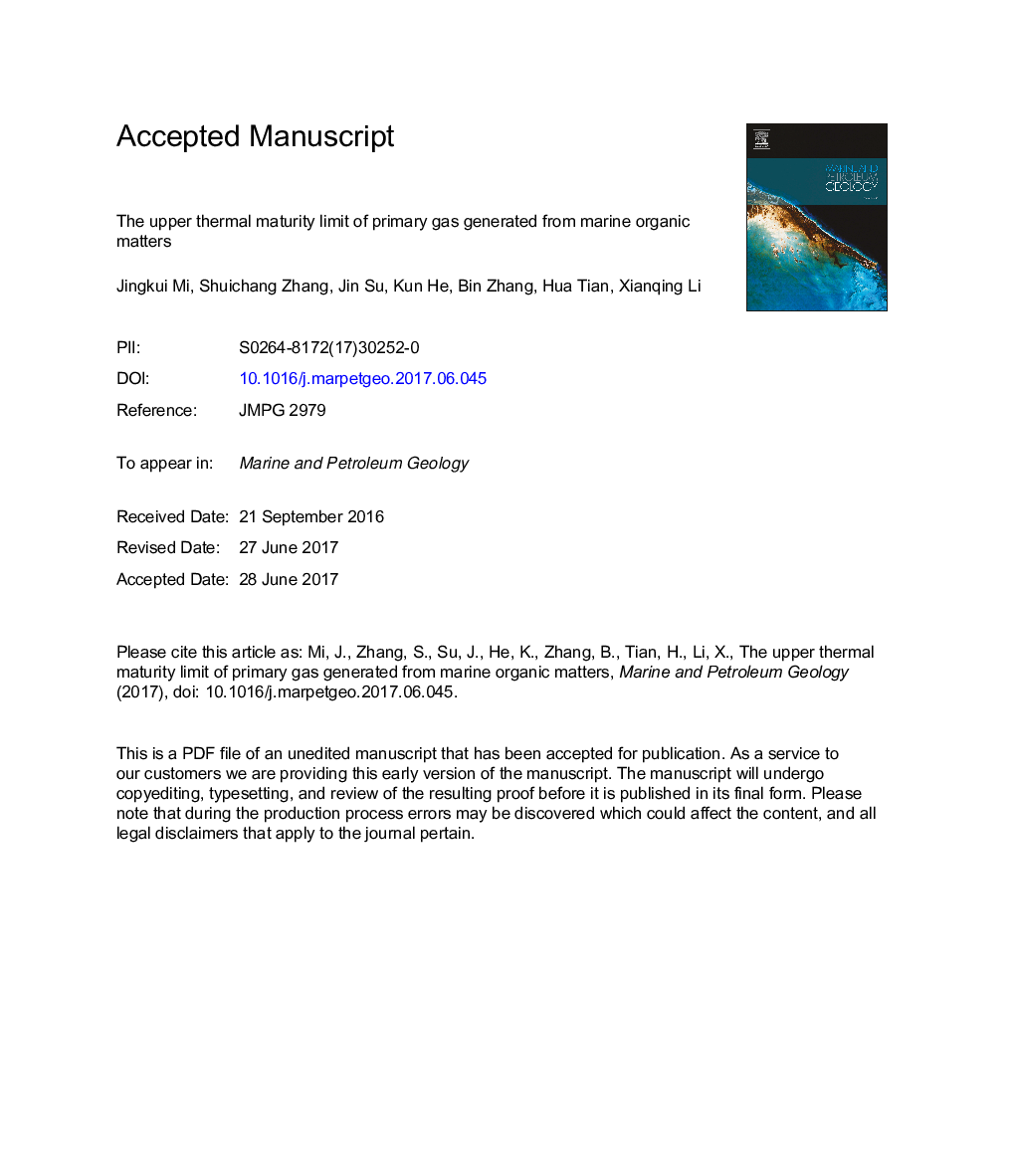| Article ID | Journal | Published Year | Pages | File Type |
|---|---|---|---|---|
| 8909304 | Marine and Petroleum Geology | 2018 | 22 Pages |
Abstract
Elemental composition and chemical structure of 16 kerogen samples concentrated from marine source rocks with maturity levels ranging from 0.65 %Ro to 3.3 %Ro were determined. Pyrolysis experiments of seven samples selected from the 16 kerogen samples were conducted in a gold tube system to clarify the process and determine the upper thermal maturity limit for primary gas generation from marine organic matter (OM). The variation of the H/C atomic ratio of the marine OM appears to evolve through three phases with increasing maturity, including a drastic decreasing phase before 1.3 %Ro, a moderate decreasing phase from 1.3 to 2.0 %Ro and a gradual decreasing phase above 2.0 %Ro. The evolution of the chemical structure measured by FTIR indicates that most oxygen containing functional groups in marine OM appear to be released prior to 0.8 %Ro. Aliphatic groups were still detected in the sample with a maturity of 3.0%Ro, but disappeared in the sample with a maturity of 3.3 %Ro. The variation of aliphatic groups VS aromatic rings (I1) displays a similar three stage pattern as the variation of H/C atomic ratio with increasing maturity. A step-by-step heating method in kerogen pyrolysis experiments was adopted to preclude secondary gas generation. The pyrolysis experimental results for samples with different maturities proved that generally the maximum yield of primary gas generated by the marine OM was not more than 140Â ml per gram of total organic carbon (TOC). Only 1.16Â ml/g TOC of hydrocarbon gas was generated by the sample with the maturity of 3.3 %Ro. Thus, it can be rationally inferred that the upper thermal maturity limit for gas generation from the marine OM may be around 3.5 %Ro. Nevertheless, the main maturity range for the primary gas generation is suggested to be below 2.0 %Ro. The yield of primary gas generated at the maturity range above 2.0%Ro takes up 10% of maximum yield of the primary gas generated by the marine OM.
Keywords
Related Topics
Physical Sciences and Engineering
Earth and Planetary Sciences
Economic Geology
Authors
Jingkui Mi, Shuichang Zhang, Jin Su, Kun He, Bin Zhang, Hua Tian, Xianqing Li,
